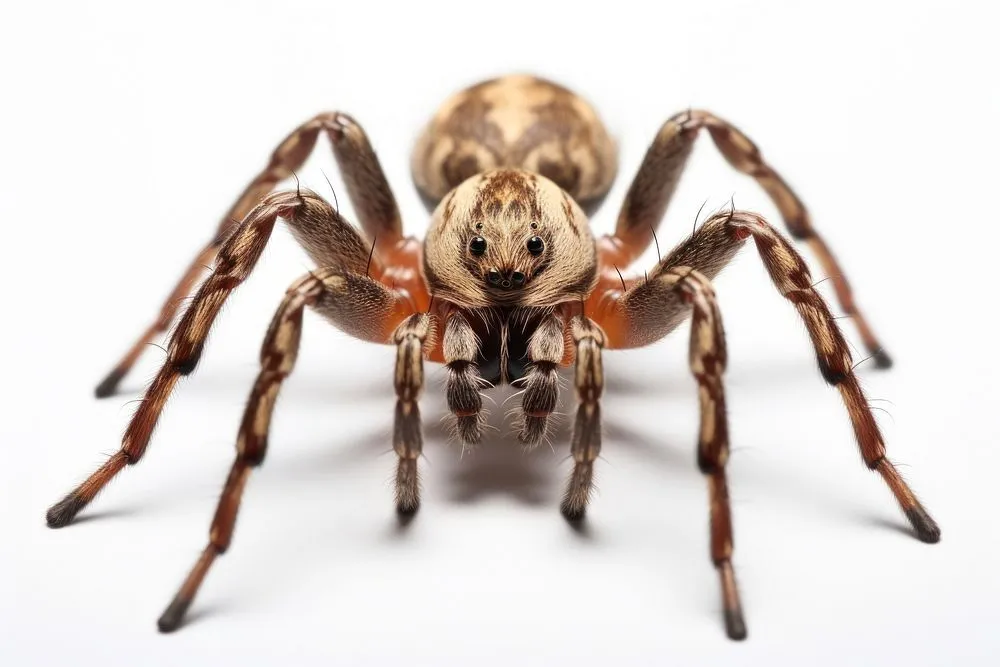Identifying Spider Tarantula Species
Spider tarantulas, with their impressive size and captivating appearance, have become popular pets. However, with hundreds of species, accurately identifying these arachnids is crucial for providing proper care and understanding their specific needs. This guide will help you navigate the fascinating world of spider tarantula species, offering insights into identification and responsible ownership. Accurate identification allows for tailored care, ensuring your tarantula thrives. This is especially important because different species have different requirements for habitat, diet, and temperament. Understanding the specific species of your tarantula enables you to provide the best possible environment and care, contributing to their health and longevity. This understanding also helps in avoiding potential dangers, like allergic reactions or bites, that can vary between species.
Physical Characteristics
Physical characteristics are fundamental in identifying spider tarantula species. Observing these traits can often provide the initial clues needed for accurate identification. Examining the size, color patterns, and overall body structure of your tarantula will provide essential information. These observations, alongside other factors, play a crucial role in correctly identifying the species of your tarantula. Accurate identification relies heavily on recognizing the differences in these physical features. These variations provide insights into a tarantula’s evolutionary history and its adaptations to its natural environment. Detailed knowledge of these characteristics helps determine whether your pet is healthy and thriving. This knowledge also provides the base for choosing the correct enclosure size and designing an appropriate habitat for your tarantula.
Size and Appearance
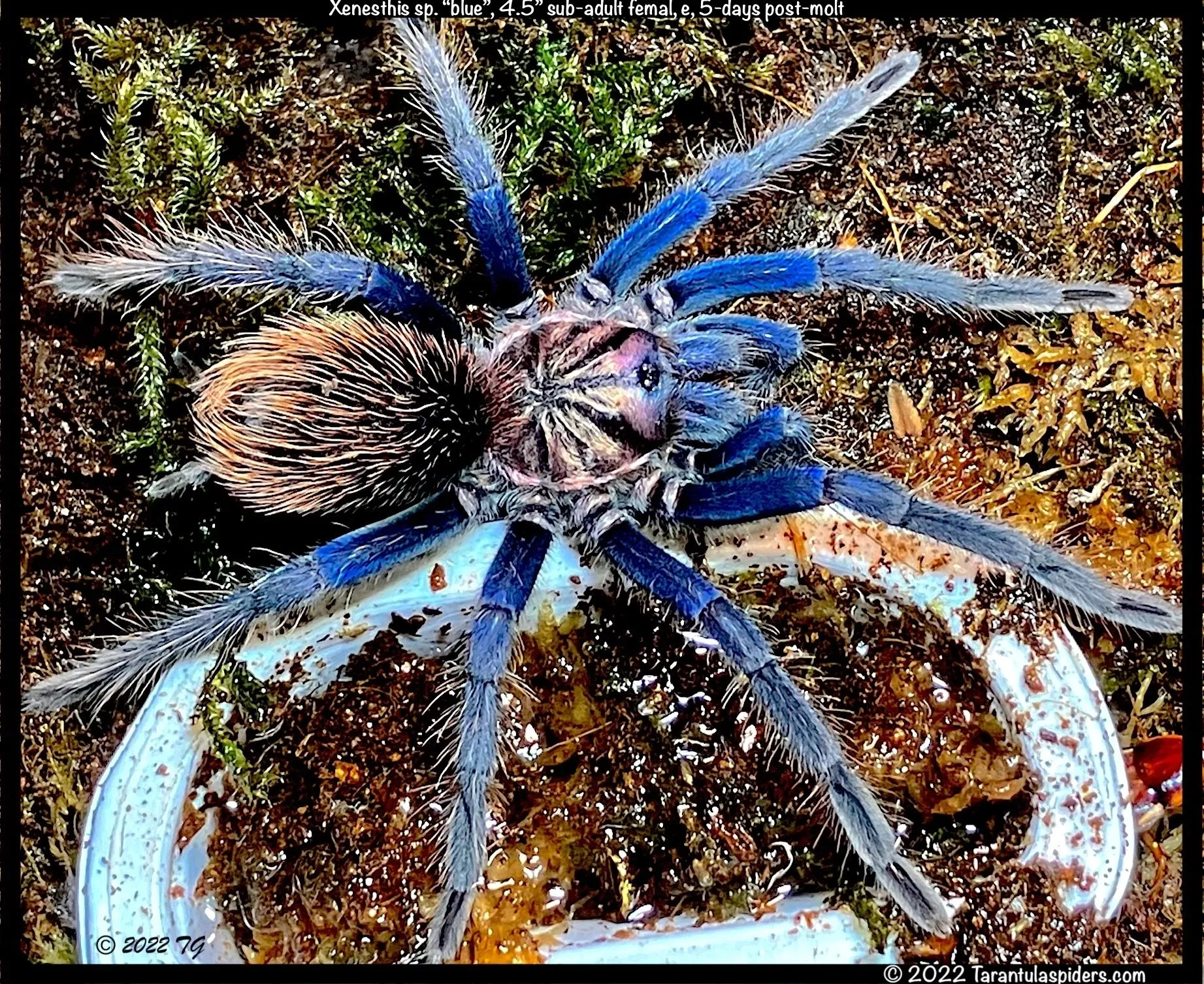
The size and general appearance of a spider tarantula are primary indicators for identification. Tarantulas exhibit a wide range of sizes, from smaller species to the giants like the Goliath Birdeater. Assessing the leg span and body length is essential. These measurements provide a fundamental understanding of the species, as the size of a tarantula indicates its maturity and overall health. Recognizing this helps to ensure the correct enclosure and appropriate feeding plan. Paying attention to the shape of the body, including the proportion of the cephalothorax (the combined head and thorax) and the abdomen, also gives crucial clues. This will also help to differentiate between various tarantula species. This differentiation is crucial for proper care, allowing you to create an environment that caters to your tarantula’s specific requirements and behaviors.
Color Variations
Coloration is another critical aspect of identifying spider tarantula species. Tarantulas display an array of colors, from the vibrant hues of the Mexican Red Knee to the more subdued tones of the Chilean Rose. The color patterns and markings on the body and legs are useful indicators. These patterns can be unique to a particular species. The color of the carapace (the upper shell of the cephalothorax), abdomen, and legs offers important clues. For example, the presence of stripes, spots, or specific color gradients can quickly narrow down the possibilities. Color variations can also differ within the same species due to factors like age, sex, and geographic location. Careful observation of these color details is essential for achieving accurate species identification. These insights enable appropriate care by reflecting the tarantula’s needs and characteristics.
Behavioral Traits
Observing the behavioral traits of spider tarantula species is crucial. Understanding the temperament, activity levels, and defensive mechanisms helps in identifying a species and managing care. This insight assists in creating a suitable and enriching environment that caters to your tarantula’s specific needs. Assessing these behavioral characteristics also helps to develop a safe handling plan, minimizing the risks of bites or defensive responses. Learning the behaviors will ultimately improve the quality of care you provide, and strengthen the bond you have with your tarantula. By recognizing and understanding the behaviors of spider tarantula species, you can provide the best possible care and ensure the health and well-being of your pet.
Temperament and Activity Levels
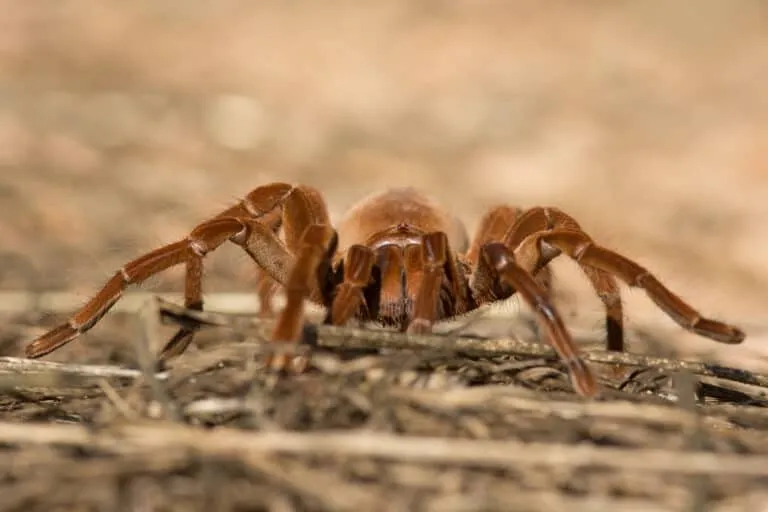
The temperament and activity levels vary significantly among different spider tarantula species. Some species are docile and relatively calm, while others can be more defensive and skittish. Evaluating your tarantula’s behavior under different circumstances is important. For instance, do they tend to hide in their burrows or exhibit boldness by being out in the open? Such insights are essential for understanding their behavior. Knowing how active a tarantula is during the day, its tendency to explore, or its preference for staying in a specific area can distinguish between species. Temperament and activity levels directly affect the enclosure’s design and the type of enrichment activities. Understanding how these elements contribute to your tarantula’s well-being helps to create a fulfilling environment that minimizes stress and promotes the overall health of the spider tarantula.
Defensive Mechanisms
Spider tarantulas have evolved a variety of defensive mechanisms to protect themselves from predators. These mechanisms can vary by species, from striking a threat to flicking urticating hairs. Knowing these behaviors is crucial for responsible care and safe handling. Urticating hairs are small, barbed hairs that can cause skin irritation and discomfort. Some species have more potent hairs than others. Recognizing these defense mechanisms is essential to avoid triggering a defensive response. Being aware of these behaviors allows you to handle your tarantula safely and effectively. This awareness also helps in setting up the environment to prevent the need for defense. Learning the defense mechanisms of each spider tarantula species will help in providing proper care and ensuring both your safety and the tarantula’s well-being. This protects your pet from unnecessary stress and injury.
Habitat and Enclosure Setup
Establishing the correct habitat is crucial for the well-being of your spider tarantula. The ideal environment should replicate the natural habitat of each spider tarantula species, catering to their specific requirements. It should facilitate their natural behaviors and support their overall health and vitality. From selecting the appropriate enclosure to providing the right substrate, temperature, and humidity, all the aspects play a vital role in the spider tarantula’s well-being. Designing the correct habitat requires understanding each species’ native environment and its preferences. This includes providing adequate space for movement, opportunities for hiding, and maintaining the right temperature and humidity levels. It is essential to create a comfortable and safe living space for your pet. A well-designed habitat helps reduce stress, supports the molting process, and enhances your pet’s overall quality of life. It creates a thriving and enriching environment for your spider tarantula.
Creating a Suitable Environment

A suitable environment for a spider tarantula involves careful consideration of all factors including the enclosure size and type, substrate and décor, and temperature and humidity control. To create the correct environment for your tarantula, you must understand its species-specific requirements. This ensures the spider tarantula species can thrive. The enclosure should replicate their natural habitat and provide adequate space for movement. Incorporating appropriate substrate, decorations, and ensuring the right temperature and humidity levels, creates a comfortable and enriching habitat. Paying attention to the environment helps to reduce stress, support the molting process, and improve the overall quality of life. Your careful environmental setup significantly contributes to the overall health and happiness of your spider tarantula, allowing them to live a long and fulfilling life.
Enclosure Size and Type
The enclosure size and type are critical factors when housing spider tarantulas. The dimensions of the enclosure must be appropriate for the tarantula’s size and species. The enclosure must provide ample space for the tarantula to move, explore, and carry out its natural behaviors. A larger enclosure is especially important for terrestrial tarantulas, which require space to move around and establish their territory. For arboreal species, a taller enclosure that allows climbing is often necessary. The enclosure type will depend on the species and your personal preferences. Consider whether it’s a glass terrarium or a plastic container. Make sure the enclosure is escape-proof. The enclosure’s design directly impacts the spider tarantula’s well-being. Properly sized enclosures reduce stress, encourage natural behavior, and provide a comfortable living space for your pet. The choice of enclosure plays a significant role in promoting a healthy and thriving environment.
Substrate and Decor
The substrate and décor are essential components of a spider tarantula’s habitat. The substrate should be selected based on the species’ needs, considering factors such as humidity retention, burrowing abilities, and ease of maintenance. Common substrates include peat moss, coconut fiber, vermiculite, or a mix of these materials. The substrate provides a surface for the tarantula to walk on, burrow in, and create its retreat. Decorations, such as branches, cork bark, artificial plants, and hides, are also crucial for enrichment. These items offer hiding places, enhance the enclosure’s aesthetic appeal, and provide opportunities for the tarantula to express its natural behaviors. The use of hides reduces stress and allows your spider tarantula to feel secure in its environment. The appropriate selection of substrate and decorations plays a key role in creating an environment that fosters natural behaviors and promotes your tarantula’s well-being.
Temperature and Humidity Control
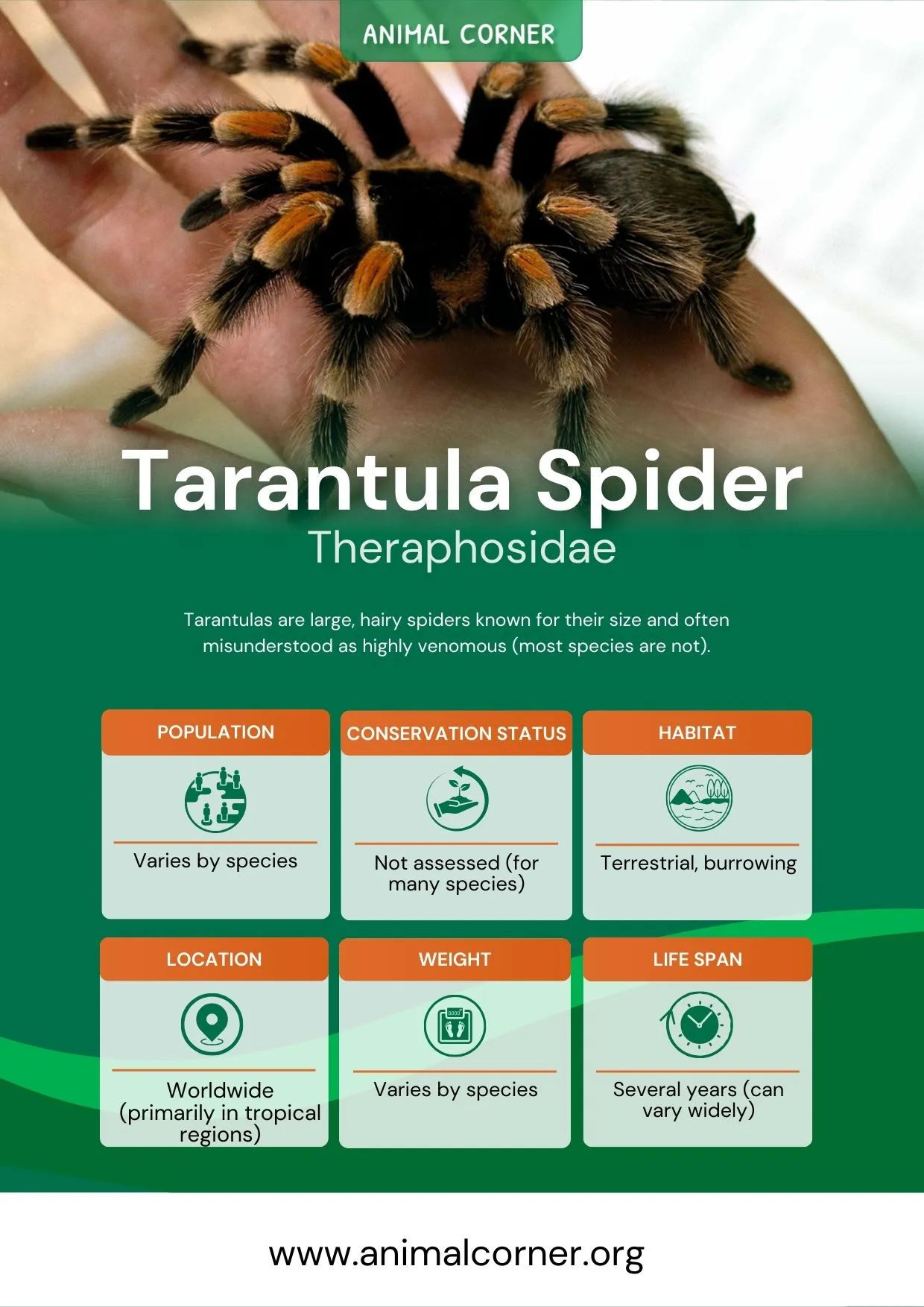
Temperature and humidity control is vital for the health and comfort of spider tarantulas. Tarantulas thrive within a specific range of temperature and humidity levels, depending on their species. Maintaining these conditions is essential for their survival and overall well-being. The right temperature supports the spider tarantula’s metabolism, digestion, and molting process. Humidity, on the other hand, helps the tarantula stay hydrated and molting. Without the proper climate, they can suffer from dehydration or have problems shedding their exoskeleton. Regularly monitoring the temperature and humidity in the enclosure is essential, and adjustments should be made as needed to keep within the ideal parameters for the particular spider tarantula species. Using a reliable thermometer and hygrometer is essential. By controlling the environment properly, you will ensure that your pet lives comfortably and in good health.
Heating and Lighting
Heating and lighting are important aspects of creating the proper environment for spider tarantulas. The majority of spider tarantula species require a specific temperature range. This temperature is usually maintained by a heat source. Depending on the species and enclosure size, heat sources such as heat mats, ceramic heat emitters, or incandescent bulbs can be used. When choosing a heat source, it’s important to consider the safety of the tarantula. Place the heat source outside the enclosure. Lighting can also be useful for the tarantula. A low-wattage bulb can provide the enclosure with a day-night cycle. Lighting also allows you to observe the spider tarantula’s behaviors. Make sure that the light and heating are carefully regulated to avoid overheating or causing fluctuations in temperature. Proper temperature control fosters proper metabolism. Lighting also assists in promoting a balanced environment for your pet. Careful use of heating and lighting ensures a healthy and enriching environment.
Misting and Ventilation
Misting and ventilation are essential for maintaining the ideal humidity levels and air quality in a spider tarantula’s enclosure. Humidity control is essential for your spider tarantula’s health and well-being. Many species require a certain level of humidity to stay hydrated and aid in the molting process. Misting the enclosure with water regularly helps maintain humidity levels. The frequency of misting depends on the species and the environmental conditions. Proper ventilation is equally important, as it helps prevent mold growth and ensures the enclosure is not stagnant. Ventilation can be provided through cross-ventilation, such as holes in the enclosure. Make sure you strike a balance between humidity and ventilation. Excess humidity can lead to mold or respiratory problems. Inadequate ventilation can result in stale air and poor conditions. Regular monitoring of humidity and ventilation will ensure your spider tarantula species has a healthy and comfortable environment.
Feeding and Diet
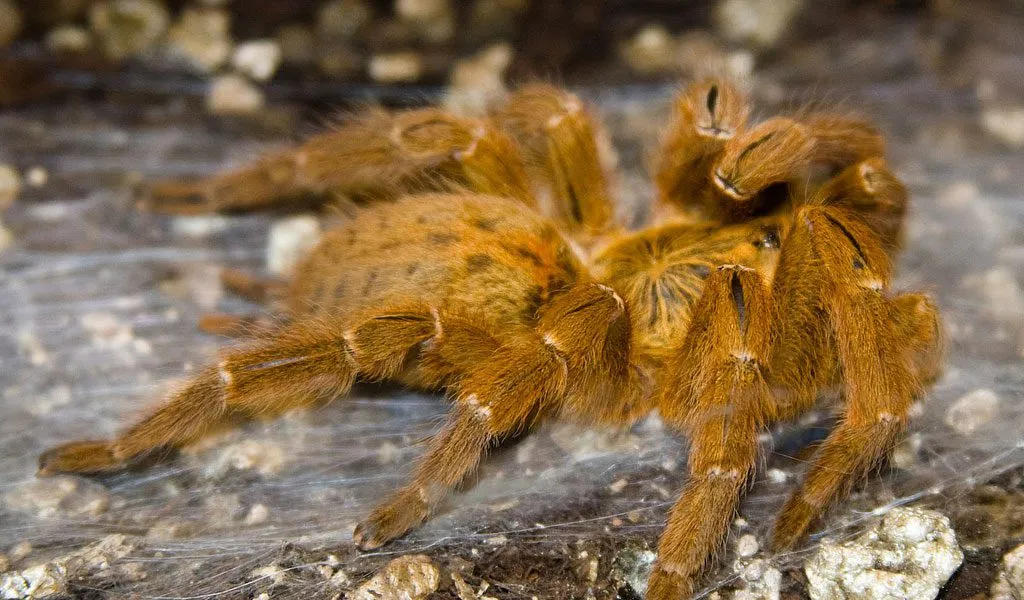
Providing the correct diet is a key part of caring for spider tarantulas. Understanding their nutritional requirements, the types of food they consume, and the proper feeding frequency are essential for their health and longevity. The right diet ensures that your spider tarantula receives all the nutrients needed for growth, molting, and overall well-being. The selection of appropriate foods and the frequency of feeding have a direct impact on their health. Proper nutrition is an integral aspect of caring for your spider tarantula. This will help in promoting their health and vitality. By understanding the dietary needs of your specific spider tarantula species, you can provide them with a balanced diet. This ensures they have the nutrients needed to thrive.
Nutritional Requirements
Spider tarantulas have specific nutritional requirements that must be met to ensure their health and well-being. Tarantulas require a diet primarily consisting of insects, as these provide the necessary proteins, fats, and other essential nutrients for growth and survival. The nutritional needs may differ slightly from species to species. For instance, young tarantulas require more frequent feedings to support their growth. Adult tarantulas may need fewer feedings, but still need a balanced diet to maintain their health. A balanced diet is necessary for proper molting. Insufficient nutrition can lead to various health problems, including stunted growth, poor molting, and reduced lifespan. Understanding these nutritional needs is critical to ensuring that your tarantula receives the proper sustenance. This will in turn ensure the tarantula is healthy and vibrant.
Types of Food
Spider tarantulas primarily eat insects. The most common food items for pet tarantulas are crickets, mealworms, and roaches. Crickets are readily available and offer a balanced nutritional profile. Mealworms are also convenient. Make sure to offer a variety of insects to provide a wider range of nutrients. The insects should be gut-loaded before feeding them to your tarantula. Gut-loading involves feeding the insects a nutritious diet, like fruits or vegetables, so that your tarantula benefits from the vitamins and minerals. The size of the prey should be appropriate for the size of your tarantula. The general rule is to provide insects that are no larger than the tarantula’s body. Always provide fresh, high-quality insects. These will improve the diet of your tarantula. This will improve your tarantula’s health. Avoid feeding wild-caught insects, as they can carry parasites and diseases.
Feeding Frequency
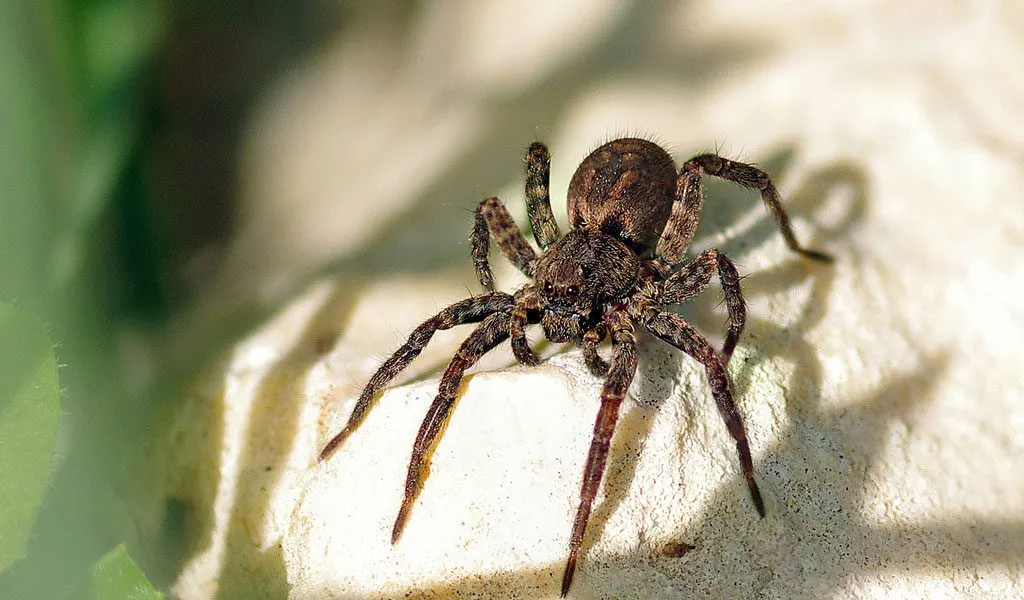
The feeding frequency for spider tarantulas varies based on their age and species. Young, growing tarantulas need more frequent feedings, often several times a week, to support their rapid growth. Adult tarantulas can be fed less frequently, usually once a week or every other week. The feeding schedule should be adjusted based on your tarantula’s body condition. If your tarantula appears to be too thin, increase the feeding frequency. If it is overweight, reduce the frequency. You should also consider the species-specific requirements. Some species, like the Chilean Rose, are less voracious eaters and may require less food. It is crucial to observe your tarantula’s eating habits and adjust the feeding schedule as needed. Overfeeding can lead to health issues, while underfeeding can lead to malnutrition. Regular monitoring of your tarantula’s eating behavior ensures their dietary needs are being met, supporting their health and longevity.
Watering and Hydration
Watering and hydration are essential for the health and well-being of spider tarantulas. Providing fresh water is critical for preventing dehydration, supporting molting, and ensuring the tarantula can regulate its body functions. Hydration requirements vary between different spider tarantula species. Some species may require higher humidity levels and more frequent access to water, while others can tolerate drier conditions. Always have a clean, accessible water source available in the enclosure. The provision of clean water is non-negotiable. This helps the tarantula to thrive. This will help prevent any potential health issues, such as dehydration. Correct hydration is essential for your spider tarantula’s survival and vitality. Monitoring the enclosure and ensuring the tarantula has access to clean water is paramount for the well-being of your pet.
Water Sources
Various water sources can be used to provide hydration to spider tarantulas. A shallow water dish is a common and effective option, and it allows the tarantula to drink water. You should also provide a sponge or cotton ball soaked in water in the enclosure. The sponge is helpful for species that are not good drinkers. Another option is to mist the enclosure regularly to provide water droplets for the tarantula to drink. The choice of the water source can depend on the species, the size of the tarantula, and personal preference. It is important to select the right water source for your spider tarantula species. Providing the proper hydration will keep your pet healthy. Always maintain a clean and readily accessible water source within the enclosure. This is crucial for ensuring the tarantula’s hydration needs are met. This also contributes to its overall health and well-being.
Importance of Clean Water
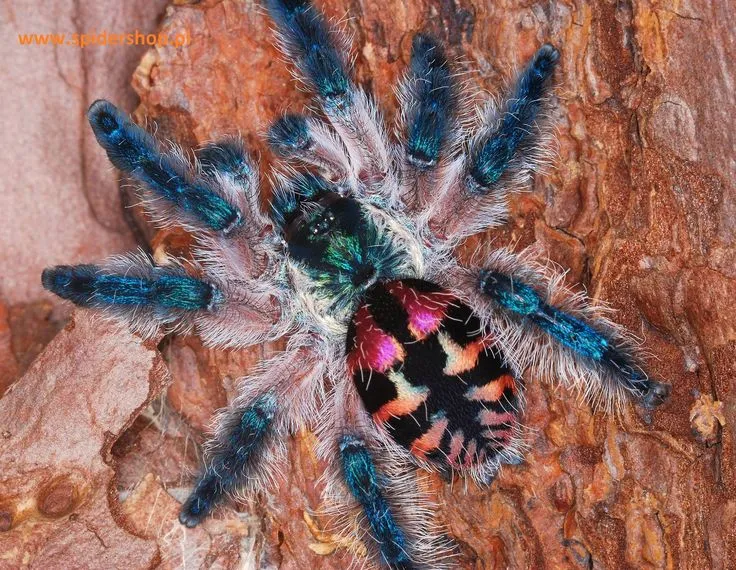
Providing clean water is crucial for maintaining the health of spider tarantulas. Contaminated water can lead to health problems, including infections and diseases. To keep the water source clean, it must be changed frequently to prevent the buildup of bacteria and algae. The water dish should be cleaned regularly with warm water and mild soap. The dish should be rinsed thoroughly to get rid of any soap residue. The use of a water filter is an option, particularly if you live in an area where the tap water quality is questionable. You should also avoid using tap water that contains chlorine or other harmful chemicals. The water can be treated with a dechlorinating agent, or you can use bottled water. Providing clean water is fundamental for the tarantula’s well-being and health. This will prevent health problems and ensure your tarantula thrives in a safe and healthy environment.
Common Spider Tarantula Species
Knowing the common spider tarantula species can assist you in identifying your pet and better understanding their needs. Several tarantula species are frequently kept as pets. These species are popular due to their stunning appearance, relatively easy care, and unique personalities. Different species have specific characteristics, from the color to the temperament. This information can help you provide the best possible care and environment. Understanding the specific characteristics of common species will enrich your experience as a tarantula owner. The information will also assist in responsible ownership. Always make sure you are familiar with the species you are considering before acquiring them.
Popular Species Overview
Several spider tarantula species are well-regarded within the pet trade. These species offer different features and care requirements, from appearance to temperament. Understanding the overview of these species can help you to decide on the species that best meets your preferences and lifestyle. Some popular choices include the Chilean Rose, known for its hardiness and docile temperament; the Mexican Red Knee, which has striking coloration and a moderate temperament; and the Goliath Birdeater, one of the largest tarantulas. Each species has distinct attributes, ranging from their native habitats to their behavior. By exploring the characteristics of these popular species, you can gain insight into their different needs and care requirements. This will assist in the decision to own a spider tarantula.
Chilean Rose Tarantula
The Chilean Rose Tarantula is one of the most popular tarantula species for beginners. Native to Chile, this species has a calm temperament and is relatively low-maintenance. They are known for their reddish-brown coloration and docile behavior. Chilean Rose tarantulas are terrestrial. This means they spend most of their time on the ground. They require an enclosure with a substrate that allows them to burrow. They need a consistent humidity level and a moderate temperature. They are also relatively slow-growing. This species makes them an excellent choice for new spider tarantula owners. Their ease of care and calm temperament makes them a great option for beginners. The Chilean Rose tarantula is an excellent choice for first-time owners. This will allow them to appreciate the marvels of these captivating arachnids.
Mexican Red Knee Tarantula
The Mexican Red Knee Tarantula is a striking and beloved species, prized for its vivid coloration and moderate temperament. Native to the Pacific coast of Mexico, this terrestrial tarantula is easily recognizable by its dark body and vibrant red markings on its legs. The Mexican Red Knee is known for its calm demeanor. This makes them a popular choice for tarantula enthusiasts. They are relatively easy to care for, requiring a terrestrial setup with a substrate for burrowing. Moderate humidity and temperature levels are also required. The Mexican Red Knee is a slow-growing species. It is relatively long-lived. Their beautiful appearance and manageable care requirements make them an excellent species. They can enrich the lives of spider tarantula owners.
Goliath Birdeater
The Goliath Birdeater is one of the largest spider tarantula species in the world. It is native to the rainforests of South America. This impressive species is known for its large size and can have a leg span of up to 12 inches. The Goliath Birdeater is a terrestrial tarantula. The species has a robust build and is covered with brown hairs. These spiders are not for beginners, because they require specialized care due to their size and potential for defensive behaviors. They require a large enclosure with a deep substrate for burrowing, and high humidity levels. Although they are not usually aggressive, their size means that handling should be done carefully. The Goliath Birdeater is truly impressive. Their unique attributes make them a captivating species for experienced tarantula keepers.
Health and Common Issues
Maintaining the health of your spider tarantula requires vigilance and preventative care. Knowing the common health issues and understanding how to recognize the signs of illness can help ensure your pet leads a healthy and fulfilling life. Regular observation of your tarantula’s behavior, feeding habits, and physical condition can provide early insights into potential health problems. Early detection and intervention are critical. Knowing what to look for and when to seek veterinary assistance can prevent minor issues from developing into severe ones. With proper care and attention, you can ensure that your spider tarantula remains healthy. This will allow you to enjoy your pet for years to come. Consistent monitoring and attention to your tarantula’s needs are fundamental to keeping them thriving.
Recognizing Health Problems
Recognizing health problems in spider tarantulas involves careful observation of their behavior and physical condition. Knowing the usual signs of health allows you to detect potential issues early. These can be treated promptly. Changes in eating habits, activity levels, and overall appearance can be indicative of a problem. If a tarantula stops eating, becomes lethargic, or exhibits unusual behavior, such as excessive hiding or erratic movements, you should be concerned. Regular observation allows for the recognition of subtle changes. This can help in the detection of illness or distress. Familiarizing yourself with your tarantula’s normal behavior, and knowing what to watch for, can assist in ensuring they thrive. Early detection and treatment are key for preserving their health and quality of life.
Signs of Illness
Knowing the signs of illness can enable you to address health problems in spider tarantulas. Some of the signs to watch out for include loss of appetite, lethargy, and changes in the appearance of the abdomen. If a tarantula stops eating for an extended period, this could indicate a problem. Lethargy, where the tarantula is less active than normal, can be a sign of illness. Any unusual appearance of the abdomen, such as swelling or discoloration, should be checked. Also watch for difficulty molting, where the tarantula struggles to shed its exoskeleton. Injuries, such as damaged legs or broken fangs, must be addressed. If you observe these signs, it’s important to consult with a veterinarian or experienced tarantula keeper immediately. They can diagnose the issue and provide the necessary treatment. Early recognition and intervention are key for ensuring your tarantula remains healthy and recovers quickly.
Preventative Care
Preventative care plays a major role in maintaining the health and well-being of spider tarantulas. There are several steps you can take to prevent health problems, including providing a proper habitat, maintaining a balanced diet, and ensuring that the environment is clean. A well-designed enclosure that meets the species-specific needs for temperature, humidity, and substrate will help ensure that the tarantula has a stress-free and comfortable life. Providing a varied diet of nutritious insects can promote overall health. Regular cleaning of the enclosure, including removing uneaten food and replacing the substrate, will prevent the buildup of harmful bacteria and mold. Practicing proper handling techniques, and avoiding unnecessary stress, will also help prevent injuries and promote your tarantula’s health. Prioritizing preventative care is a critical component in responsible spider tarantula ownership. These efforts enhance your pet’s quality of life.
Handling and Safety
Handling spider tarantulas should be approached with caution. It is essential to prioritize your safety and the well-being of your pet. Some species are more docile than others. It is essential to understand the potential risks associated with handling a tarantula. Practicing safe handling techniques, and being aware of defensive behaviors, will minimize the risk of bites or other incidents. Proper handling not only reduces the risk of injury to yourself, but also minimizes stress on the tarantula. A considerate approach contributes to building a trusting relationship with your pet. Handling should always be done with care and consideration for the tarantula’s needs. Proper handling practices will result in a positive experience for both you and your pet.
Safe Handling Techniques
Using safe handling techniques is critical for interacting with spider tarantulas. Never attempt to handle a tarantula unless it is necessary. For instance, if you need to clean its enclosure or move the tarantula. If you do need to handle your tarantula, do so slowly. Avoid sudden movements. Approach the tarantula with calm and measured motions. You should try to coax the tarantula onto your hand, using a soft brush or a small piece of cardboard. Support the tarantula gently. Do not squeeze or grasp the spider. Always keep your hands close to the ground to prevent the tarantula from falling. Washing your hands before and after handling is recommended. This practice helps prevent the spread of any potential contaminants. Remember, handling should always be a measured and considerate process. This minimizes stress and maximizes safety for both you and your pet.
Avoiding Bites and Reactions
To avoid bites and adverse reactions when handling spider tarantulas, it is important to understand their defense mechanisms and potential risks. The best way to avoid being bitten is to avoid unnecessary handling. Some species may bite when they feel threatened. Understanding and respecting the tarantula’s behavior can also help. Never make sudden movements around a tarantula, and be patient. If a tarantula appears agitated or defensive, do not attempt to handle it. Reactions to bites can vary among individuals. Some people may experience only minor symptoms, such as redness, swelling, and itching. Other people may be allergic to the venom and experience more severe reactions. If you are bitten, you should clean the bite area with soap and water. Seek medical attention if you experience any symptoms of a severe reaction. The primary goal is to minimize potential risks. This can be achieved by knowing the tarantula’s behavior and taking the time to follow proper procedures. This will assist in fostering a positive relationship with your spider tarantula.
Conclusion
Caring for spider tarantulas is a rewarding experience that requires knowledge, patience, and a commitment to their well-being. Understanding the various spider tarantula species, their specific requirements, and the importance of responsible ownership is essential. From proper habitat setup to providing a balanced diet and practicing safe handling techniques, every aspect of care contributes to a tarantula’s health and longevity. By studying their behavior and respecting their needs, you can create a thriving environment where your spider tarantula can flourish. Your attention will make the experience of owning a spider tarantula not only fulfilling but also a valuable learning opportunity. This helps you to appreciate the unique characteristics and beauty of these fascinating creatures.
